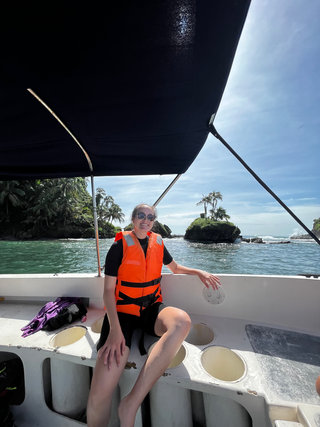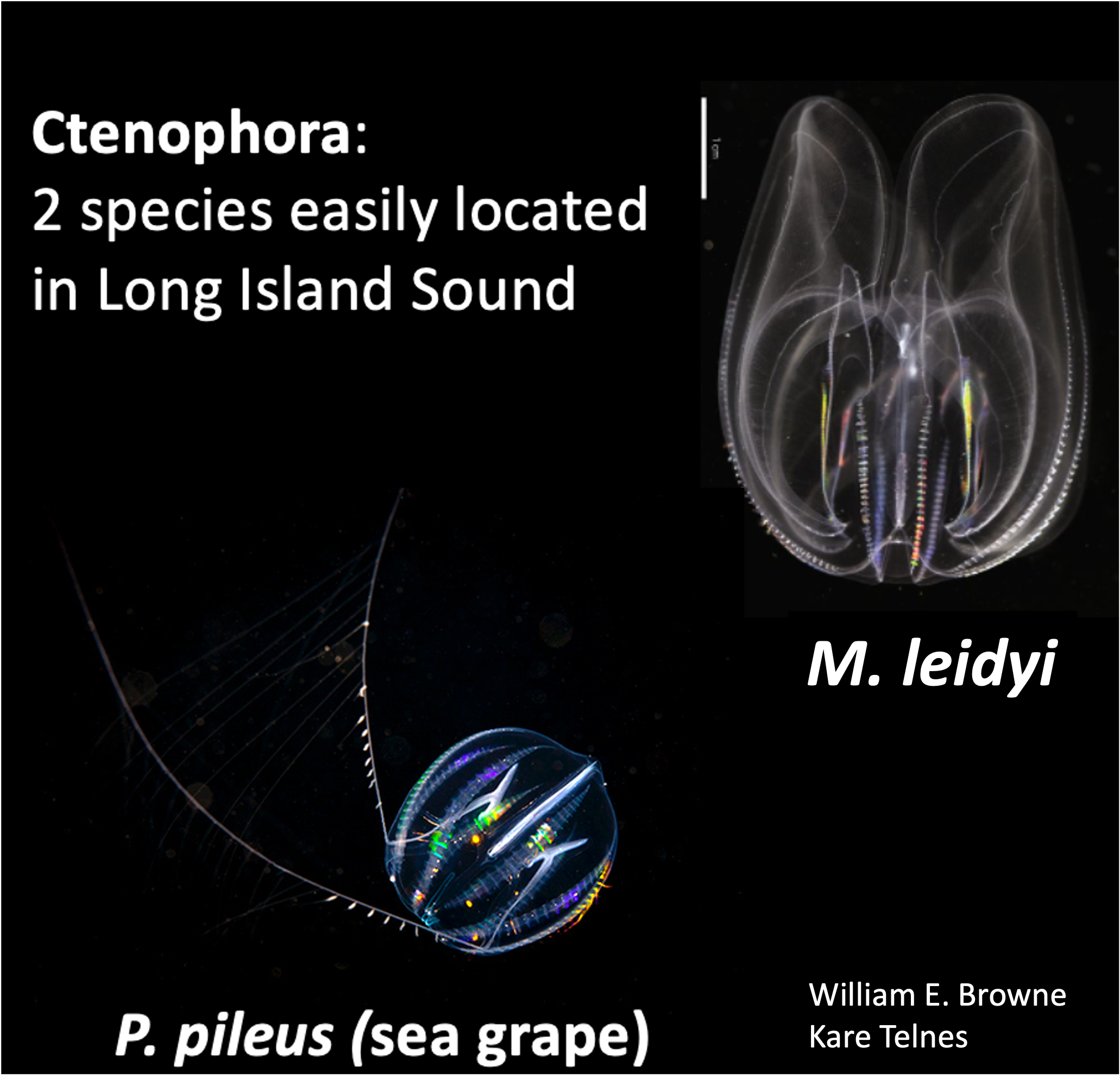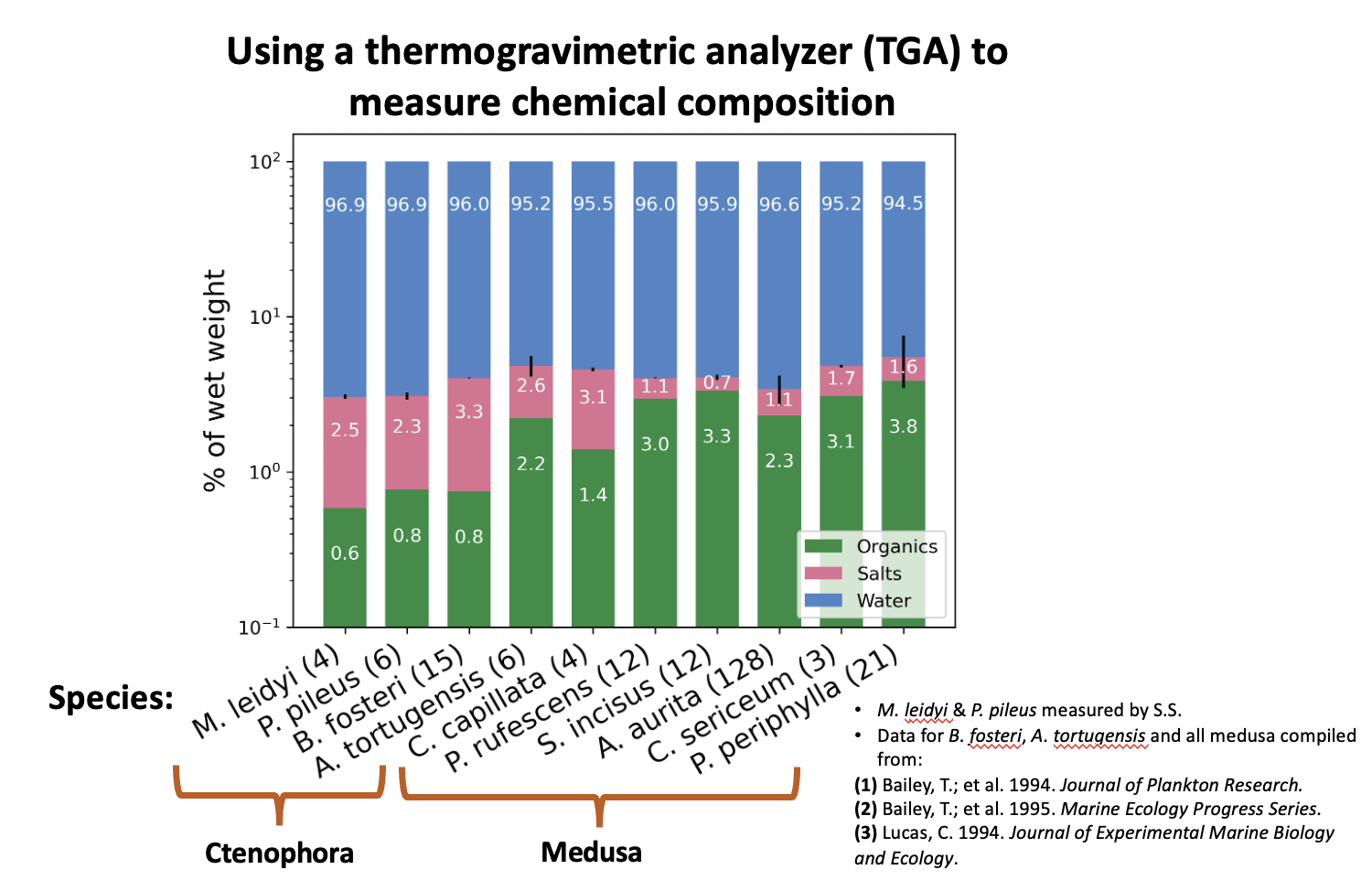Sara used a thermogravimetric analyzer to ash two species of whole-body ctenophore samples (M. leidyi and P. pileus) and quantify their basic chemical composition: water, organic, and salt content.

Sara at the Smithsonian Tropical Research Institute in Bocas Del Toro, Panamá. She learned about collection techniques and taxonomy of ctenophores.
Sara Siwiecki ‘25
(she/her)
Home Department: Molecular Biophysics and Biochemistry (Sweeney Lab)
Research Project: The biochemical and biophysical structure of ctenophore mesoglea
My thesis explores the unique biochemistry and material properties of the gelatinous bodies of ctenophores (also known as comb jellies), which are one of our most distant animal relatives. Their jelly, the most voluminous part of their body, consists of bulk extracellular matrix (ECM) material. However, ctenophores lack the genes for collagens that typically form most of the ECM in animals. So, my project involves uncovering (1) the major macromolecular composition and (2) the biophysical structure of ctenophore mesoglea using materials sciences and biochemical characterization techniques, such as rheology, TGA, colorimetric assays, DSC, AFM, GC-MS/MS, and NMR.
Relevant Publications


Sara compared her composition measurements to the literature and found that ctenophore bodies are less than 1% organic (biological) material and over 98% saltwater, notably different from medusozoans.